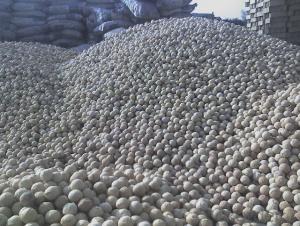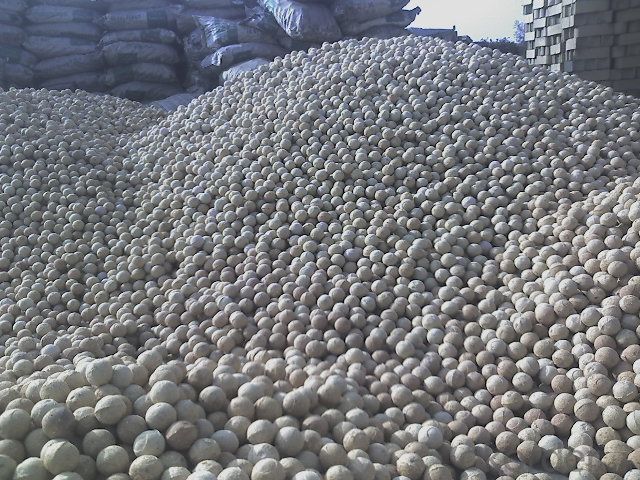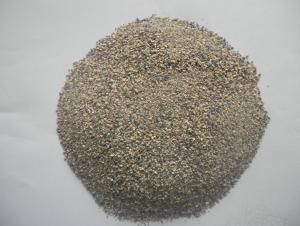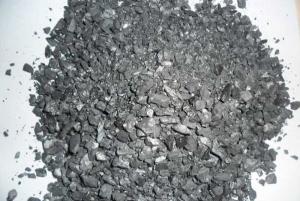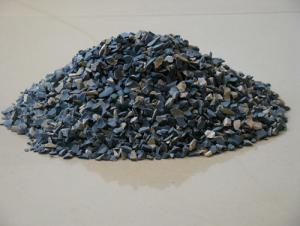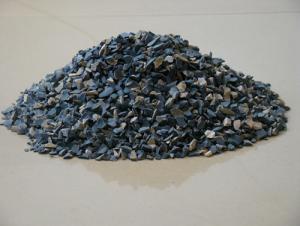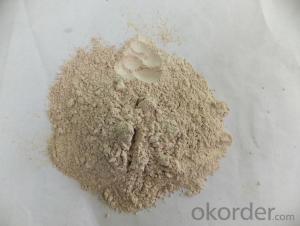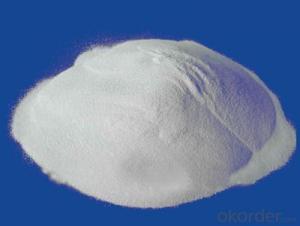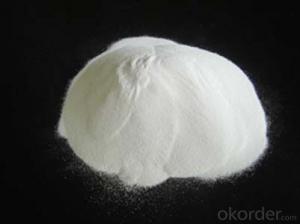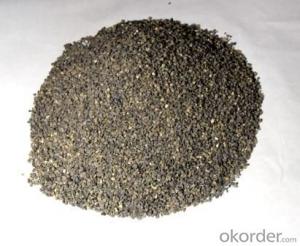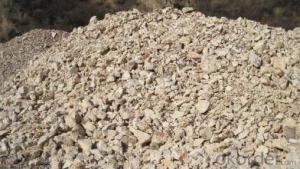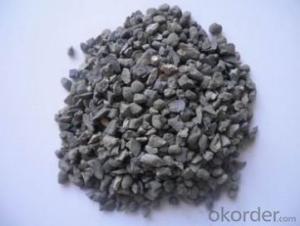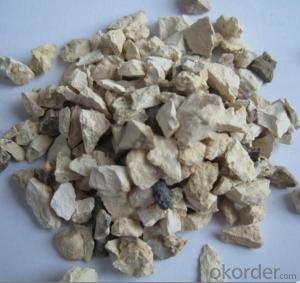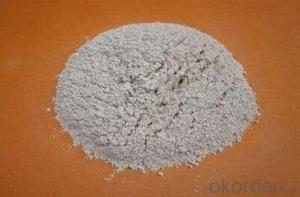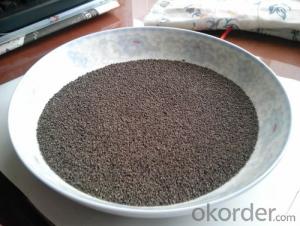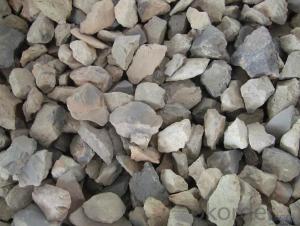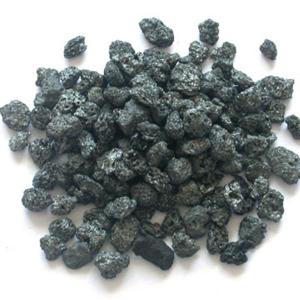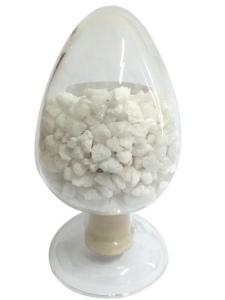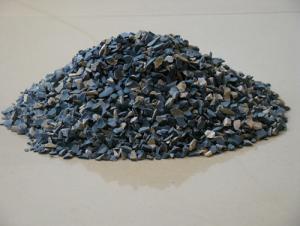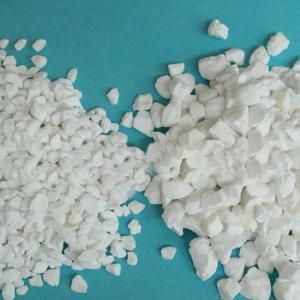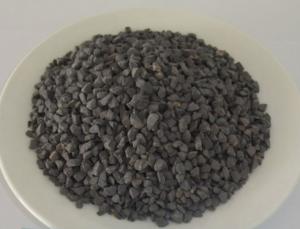Raw Materials for Refractory:AL2O3 85%Min China Calcined Bauxite Manufacture
- Loading Port:
- China main port
- Payment Terms:
- TT OR LC
- Min Order Qty:
- 25 m.t.
- Supply Capability:
- 20000 m.t./month
OKorder Service Pledge
OKorder Financial Service
You Might Also Like
Usage of Calcined bauxite
1.Aluminium industry.
2.Precision casting.
3.Refractory industry.
4.Silicic acid aluminium firefibre
5.Mixed with magnesium oxide,it can be an nice bonding agent,especially for pouring entire steel teeming ladle lining
6.Manufacture bauxite cement,grinding abrasives.ceracmic industry,and chemical industry for making aluminium compounds
Packaging & Delivery
| Packaging Details: | within 15 days after receiving L/C or Payment |
| Delivery Detail: | Packing in 25kg bag or 1mt big bag |
Specifications
Bauxite
1 Al2O3:>=85%
2 Fe2O3:<=2.0%
3.Bulk Density:>=3.0g/cm3
5. refractory/welding industry
AL2O3 85%min China Calcined Bauxite Manufacture
1. Calcined bauxite
AL2O3:70% min.
FE2O3:2% max.
SIZE: 1-5MM 90% min.
china calcined bauxite manufacturer since 1999
purity of al2o3 75%-90%
rotary kiln calcined bauxite
self-owned bauxite mines
Specifications of Calcined bauxite
Grade | AL2O3 | SIO2 | FE2O3 | TIO2 | K2O+Na2O | CaO+MgO | Bulk density |
HX75 | 75min | ≤17 | ≤3.0 | ≤4.0 | ≤0.3 | ≤0.5 | ≥2.70 |
HX80 | 80min | ≤12 | ≤3.0 | ≤4.0 | ≤0.3 | ≤0.5 | ≥2.80 |
HX85 | 85min | ≤8 | ≤2 | ≤4.0 | ≤0.3 | ≤0.5 | ≥3.00 |
HX86 | 86min | ≤7 | ≤2 | ≤4.0 | ≤0.3 | ≤0.5 | ≥3.10 |
HX87 | 87min | ≤6 | ≤2 | ≤4.0 | ≤0.3 | ≤0.5 | ≥3.20 |
HX88 | 88min | ≤5 | ≤1.8 | ≤4.0 | ≤0.25 | ≤0.5 | ≥3.25 |
HX90 | 90min | ≤3 | ≤1.8 | ≤4.0 | ≤0.25 | ≤0.5 | ≥3.3 |
Moisture(max) | 0.50% | ||||||
Size of Calcined bauxite
Section sand:0-0.3mm,0-0.5mm,0-1mm,1-3mm,3-5mm,5-8mm.
Fine powder:100#-0,200#-0,325#-0
Moh’s hardness: 7-8
Melting point:1770-2000 C
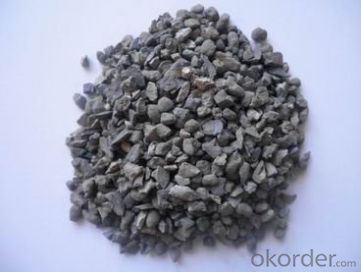
- Q: How to use fire-resistant soil?
- It can live with water, not too sticky. Don't be too thin. It's best to put the stove in the inner wall.
- Q: Does anyone know the refractory temperature of fire-resistant glass?
- Ordinary glass will be completely liquefied in the furnace of about 1100 degrees for half an hour and will not deform below 600 degrees. toughened glass fire-resistant glass is the product of ordinary glass after being processed Glass will mainly burst after encountering fire. When unevenly heated or encountering sudden drastic changes in temperature, ordinary glass will burst if the sharp temperature difference is over 70-120 degrees and toughened glass will burst at 200 degrees. It is not yet clear of the bursting temperature for the refractory glass. If the overall glass is not heated evenly, it will have no significant change below 600 degrees, and it will deform with the increase of temperature until melting. The fire-resistant time of the glass you said is the time to heat the glass into the extreme temperature differences it can endure, which should not be more than 10 minutes
- Q: What kind of fireproof material is used for steel structure?
- Brushing or spraying the coating on the surface of steel structure to prevent burning and insulate heat. It also prevents undermining the rolled steel from rapid temperature elevation and avoid collapse of building for lose of supporting capacities. Agglutination material are classified as fireproof coatings for steel structures which is solvent based and Water-based steel structure fire retardant coatings. Fireproof coatings for steel structures which is solvent based are subdivided into fireproof coatings for steel structures which is solvent based with low benzene content and fireproof coatings for steel structures which is solvent based with high benzene content (TVOC≤600g / L, benzene ≤5g / kg). It can be divided by thickness. ultra-thin (CB) fireproof coatings (coating thickness ≤3mm), thin (B) fireproof coatings (3mm & amp; lt; coating thickness ≤7mm) and thick (H) steel structure fire retardant coating (7 mm & amp; lt; coating thickness ≤45㎜). The coating can be divided into non-intumescent fire retardant coating and intumescent fire retardant coating according to the the expansion properties. Slim (CB) and fire-resistant coating for steel structure and thin(B) fireproof coatings is intumescent fire retardant coating, thick (H) fire-resistant coating for steel structure is intumescent fire retardant coating. Unprotected steel structure has fire endurance of 0.25 hours.
- Q: Who knows what kind of material the fire-proof plate use, and is it good?
- Personally speaking, fireproof clapboard is very good. It is also known as fire-proof plate or fire retardant board. Made by the pressing of a variety of incombustible?materials after scientific deployment, it is good in fire retardation and can be fire resistant for over 3 hours. It is also non-toxic and non-detonating with high mechanical strength, water and oil resistance, and good chemical corrosion resistance.
- Q: What's the classification of refractory material?
- Magnesium aluminum is complex and mainly seeing what classification standard is like according to the appearance shape can be divided into two categories, setting and not setting according to the acid alkali can be divided into acidic, magnesia, high aluminum, ramming expected, spinel, spray coating, plastic, just the quality of the jade, daub material according to the chemical composition is divided into, such as clay, neutral and alkaline according to the operation mode can be divided into different castable, magnesium, calcium, magnesium chrome
- Q: What is the material of fire resistant glass reinforced plastics grating?
- What is the material of fire resistant glass reinforced plastics grating?
- Q: What's the fire resistance test method of doors and roller shutters?
- Fire resistance test method of doors and roller shutters: This standard specifies the fire resistance test method for roller shutter doors under standard fire conditions. The method is used to test the fire resistance of the ventilating duct when bearing the external fire (A duct) and internal fire (B duct). Fire resistance test of vertical ducts may be conducted referring to this standard. 1.Test specimen1.1 The test specimen is obtained by cutting from any part of the qualified metal tube unless otherwise relevant standard or mutual agreement specifies the cutting position of the metal tube. 1.2 Length of the specimen: L≈2.5D+50mm (D: outer diameter of the metal tube). The cut surface of the specimen must be perpendicular to the axis of the metal , and the seamed edge of the cut should be round off. Test method GB243-82 of metal tube necking 2. Test procedures 2.1 In the test, punch or press the metal tube into the tapered conical seat (see Figure) with a hammer or press machine, and make it uniformly diminished to the regulated shrinkage X which is calculated according to the following formula: Test method GB243-822 for metallic pipe necking: The inner wall of the seat cover used in the test should be polished, and has certain hardness and is coated with lubricating oil. Its conicity is 1:10, 1:5 or others in accordance with relevant standard provisions. If there is no provision, then adopt the conicity of 1:10. This standard is not suitable for: a) The pipeline whose fire resistance depends on the fire resistance of the ceiling; b) The pipeline with access door, unless otherwise the access door is included into the pipeline and tested together; c) The pipeline with two or three sides; d) Fume exhaust pipes;
- Q: How can the furnace be replaced after the gasifier or water wall is replaced with refractory material?
- If there is only a small local, bake according to the overall it is really troublesome, water wall repair point of direct drive estimation problem is not large, the water wall itself is used to slag slag slag principle, can also play the role of refractory materials.
- Q: What are grades of refractory materials?
- Refractories have lots of varieties which all have different purposes. It is necessary to classify refractories scientifically in order to scientifically study, choose and manage them. Classification methods of refractories include chemical properties classification, chemical composition of mineral classification, manufacturing technique classification, morphology of the material classification. 1 divided according to the level of refractoriness: ordinary refractory materials: 1580 ℃ ~ 1770 ℃, advanced refractories: 1770 ℃ ~ 2000 ℃ and super refractories: above 2000 ℃ 2, divided in accordance with shapes and sizes : Standard ones: 230mm × 113mm × 65mm, no more than four ruler.
- Q: What are the uses of refractory materials of glass furnace?
- crown--high-purity silica bricks; wall--melting end 41# fused zirconia corundum bricks with no shrinkages(41% of zirconium, similarly hereinafter), cooling end 33# fused zirconia corundum bricks with no shrinkages; bottom--33# fused zirconia corundum bricks(with shrinkages); breastwork--33# fused zirconia corundum bricks(with shrinkages); port--33# fused zirconia corundum bricks(with shrinkages); regenerator chamber--the upper part is for magnesite-chrome bricks, the bottom part is for high-duty fireclay bricks; checker--the upper part is for high purity magnesia bricks, and the bottom part is for magnesite-chrome bricks; flue--clay bricks.
Send your message to us
Raw Materials for Refractory:AL2O3 85%Min China Calcined Bauxite Manufacture
- Loading Port:
- China main port
- Payment Terms:
- TT OR LC
- Min Order Qty:
- 25 m.t.
- Supply Capability:
- 20000 m.t./month
OKorder Service Pledge
OKorder Financial Service
Similar products
Hot products
Hot Searches
Related keywords
